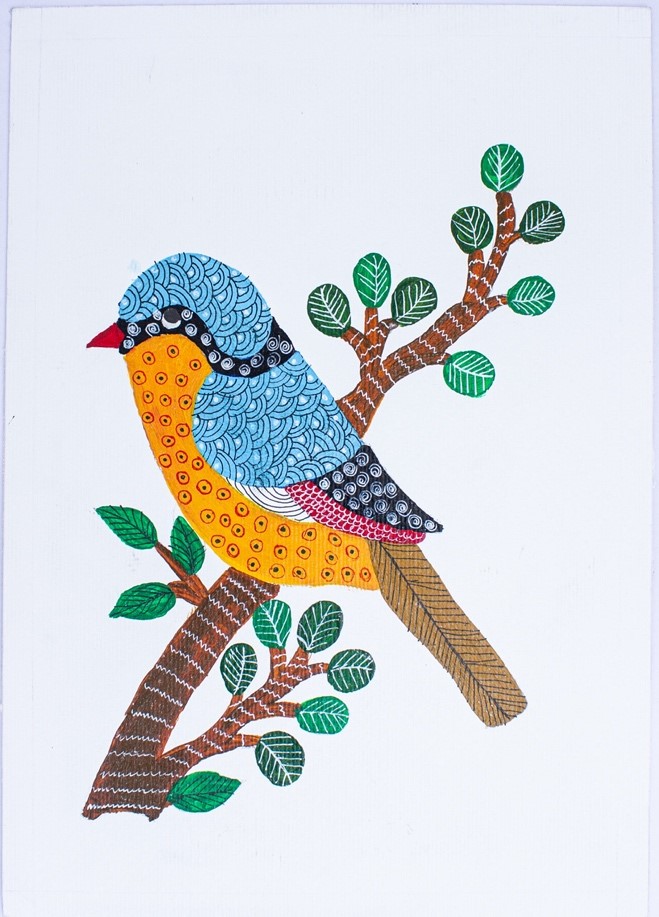Description

Disclaimer: Copyright infringement not intended.
Context
- During the 15th BRICS summit in South Africa, Prime Minister Narendra Modi presented unique gifts to various leaders from participating nations.
- These thoughtful gifts showcase India's rich cultural heritage and artistic prowess.
Details
Gift to South African President Cyril Ramaphosa
- Prime Minister Modi gifted a Bidri work Pair of Surahi to President Ramaphosa.
- The Bidri work, originating in the Bidar region and dating back 500 years, is an Indian innovation inspired by Persian art.
- The Pair of Surahi is adorned with intricate patterns casted on the surface and inlaid with pure Silver wire.
- The process, known as "nakkashi," involves transferring patterns from paper onto silver sheets.
- This craft, requiring precision and skill, is practiced in various parts of India, notably in Karnataka.
Gift to First Lady of South Africa Tshepo Motsepe
- PM Modi presented a Naga shawl for Tshepo Motsepe, the First Lady of South Africa.
- This shawl is a splendid example of textile art, woven for centuries by the tribes in Nagaland.
- Crafted from locally sourced materials such as cotton, silk, and wool, the shawl boasts geometric and symbolic designs.
- These designs are deeply rooted in the tribe's myths, legends, and beliefs, imbuing them with special meanings and significance.

Gift to Brazilian President Luiz Inácio Lula da Silva
- To Brazilian President Lula da Silva, PM Modi gifted a Gond painting.
- The Gond painting is a revered tribal art form originating in Madhya Pradesh.
- The intricate paintings, created using dots and lines, adorn the walls and floors of Gond households.
- Natural colors and materials like charcoal, plant sap, and leaves are used to create these exquisite artworks.
- The term "Gond" is derived from the Dravidian expression "Kond," which means "green mountain."
Gond Painting: Tradition, Technique, and Significance
- Gond painting is a traditional form of tribal art that originates from the Gond communities of central India.
- The Gonds are one of the largest Adivasi (indigenous) communities in India and are known for their rich cultural heritage, which includes their unique style of painting.
- Gond paintings are characterized by intricate and vibrant patterns, depicting the connection between humans, nature, and the spiritual world.
History and Evolution
- Gond painting has a long history, deeply rooted in the Gond culture.
- Traditionally, these paintings were created as a form of expression for various rituals, festivals, and celebrations.
- Historically, Gond artists used natural colors derived from materials like plant sap, charcoal, and cow dung.
- Over time, these paintings have evolved to include contemporary themes while retaining their distinctive style.
Themes and Motifs
Gond paintings are known for their distinctive patterns and motifs. Some common themes and motifs in Gond paintings include:
- Nature: Gond artists often depict elements of nature such as trees, animals (elephants, birds, and more), and rivers. These elements are often interconnected, reflecting the community's close relationship with the natural world.
- Mythology and Folklore: Gond paintings frequently feature characters from local myths, legends, and folktales. These stories are passed down through generations and are visualized in the artworks.
- Rituals and Celebrations: Many Gond paintings are created in connection with various rituals and celebrations, illustrating the significance of these events in the community's life.
- Spiritual and Mystical Elements: The spiritual beliefs of the Gond people are also depicted in their art. Symbolic representations of gods, goddesses, and other spiritual beings are common in Gond paintings.
- Life and Community: Gond paintings often depict scenes from daily life within the community, showcasing activities like farming, dancing, and social gatherings.
Techniques and Process
Gond paintings are traditionally created on walls, floors, and other surfaces within the Gond households. However, with changing times, artists have adapted to using paper, canvas, and other modern mediums. The process of creating a Gond painting involves the following steps:
- Outline: The artist begins by creating the basic outline of the subject using a fine-tipped brush or pen.
- Filling: Intricate patterns and motifs are filled in using vivid and contrasting colors. Traditionally, natural colors were used, but contemporary artists also use acrylic paints.
- Dot Work: Gond paintings are famous for their dot work, where fine dots are used to create intricate designs and textures.
- Detailing: The painting is then detailed with finer lines and additional decorations, enhancing its visual appeal.
- Symbolism: Each element in the painting holds symbolic significance, conveying cultural and spiritual messages.
Significance and Contemporary Adaptations
- Gond painting serves not only as a form of artistic expression but also as a cultural repository of the Gond community.
- It connects the past with the present and provides a visual representation of their beliefs, traditions, and way of life.
- With the emergence of the global art market, Gond paintings have gained recognition on a wider scale, leading to collaborations with contemporary artists, art institutions, and exhibitions.

Conclusion
Gond painting is a vibrant and intricate art form that reflects the rich cultural heritage of the Gond community. Its evolution from traditional wall art to contemporary canvases showcases its adaptability and enduring significance. As Gond artists continue to share their stories and perspectives through their art, the world gains deeper insight into the intricate connections between humans, nature, and spirituality.
|
PRACTICE QUESTION
Q. Discuss the cultural significance and artistic uniqueness of Gond painting, a traditional tribal art form from central India. Also, analyze the challenges faced in preserving and promoting this art form while ensuring its authenticity in the contemporary art world. (250 Words)
|
https://www.hindustantimes.com/india-news/nagaland-shawl-to-gond-painting-pm-modis-special-gifts-for-brics-leaders-101692897894233.html















